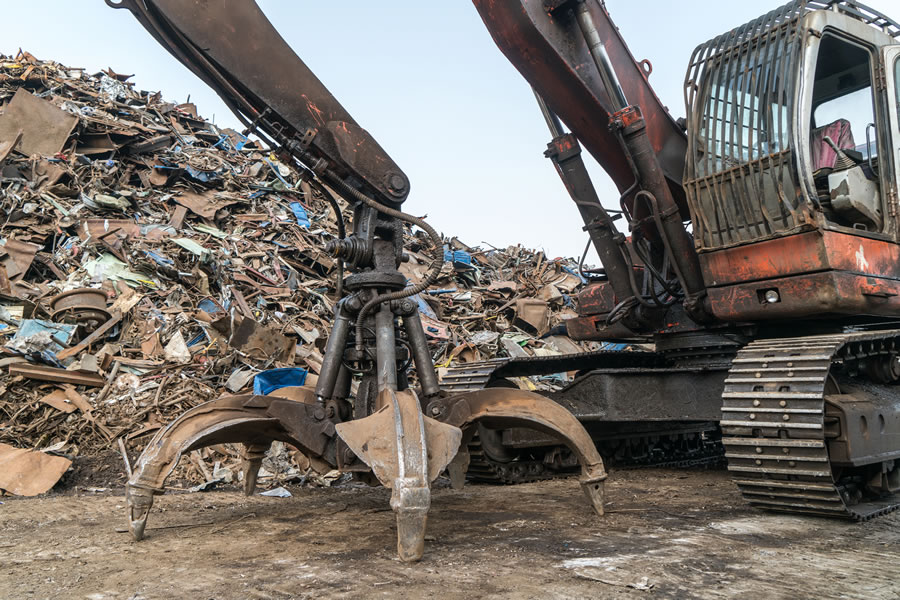
Many people who are looking to get started with scrap metal recycling wonder what the difference between ferrous and non-ferrous metals is. You should be aware that separating these two types of scrap metal can earn you more money and save time. However, the average scrapper may not have the sophisticated tools that scrap metal buyers use. Here’s a brief rundown on the distinction between ferrous and non-ferrous metals without fancy tools.
Here at Just Scrap It, we understand that being able to distinguish between ferrous and non-ferrous metals is an essential skill for recyclers, DIY enthusiasts, scrap metal buyers in Seffner, FL, and anyone working with metals. Ferrous metals contain iron, making them magnetic and prone to rust, while non-ferrous metals do not contain iron and are more resistant to corrosion. Even without sophisticated tools, there are practical ways to tell these metals apart.
This is arguably the simplest way to differentiate ferrous from non-ferrous metals. Ferrous metals such as steel and iron are magnetic, so a magnet will stick to them. Non-ferrous metals, including aluminum, copper, brass, and lead are non-magnetic, and a magnet will not adhere. This method is quick, reliable, and requires no technical expertise.
Sometimes all you need to do is use your eyes. Examining the surface of the metal can reveal clues about its type. Ferrous metals often have a darker appearance and may show signs of rust or corrosion over time. Non-ferrous metals, on the other hand, tend to maintain their luster and resist rusting. For example, aluminum is silvery and lightweight, while copper has a reddish tone, and brass appears yellowish.
Non-ferrous metals are lighter than ferrous metals of the same size. Aluminum, for instance, feels noticeably light compared to steel or iron. Lead, however, is an exception, as it is dense and heavy. Even with no measuring tools, experienced hands can sense the difference simply by lifting or handling the metal.
Rust is a key indicator of ferrous metals. If you notice reddish-brown rust forming on the metal, it almost certainly contains iron. Non-ferrous metals do not rust in the same way; they may oxidize or develop a patina (like copper turning green) but won’t produce the familiar reddish rust of iron or steel. Observing corrosion patterns can help you categorize the metal.
Tapping or striking the metal can also provide hints. Ferrous metals, being dense and strong, usually produce a higher-pitched, ringing sound when struck. Non-ferrous metals have a softer, duller tone. While this test requires some practice to master, it can be surprisingly effective when combined with other methods.
Understanding where the metal comes from can offer clues. Ferrous metals are commonly used in construction, automotive parts, and heavy machinery due to their strength. Non-ferrous metals are widely used in electrical wiring, plumbing, appliances, and decorative items because of their corrosion resistance and light weight. Recognizing typical applications can help reinforce your identification.
Just Scrap It is a reputable scrap metal company that accepts both ferrous and non-ferrous metals and offers fair prices in the industry. Whether you have aluminum cans, steel bars, copper wires, kitchen appliances, plumbing fixtures, or electronics, we’re ready to buy your collection. We pride ourselves on our convenient scheduling and prompt payment for scrap metals. Contact us today to learn more about our scrap metal recycling services and schedule your next pickup or drop-off at our recycling facility.
The people were nice and I was able to sell my scrap metal quickly.
Whenever I have metal to get rid of, this is the place to bring it. They are fast and friendly.
I'm thankful for Scrap It. They are great to work with. Friendly and helpful. Thanks
Great service. Very friendly. Highly recommended this scrap yard. Ur very welcome and thanks again.